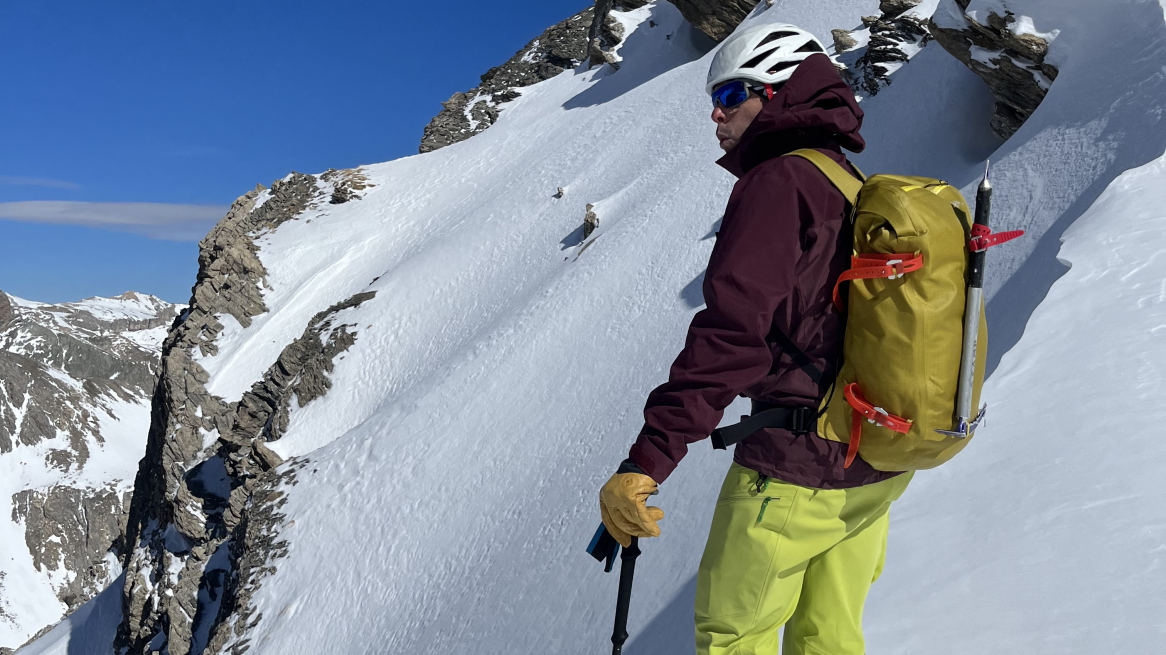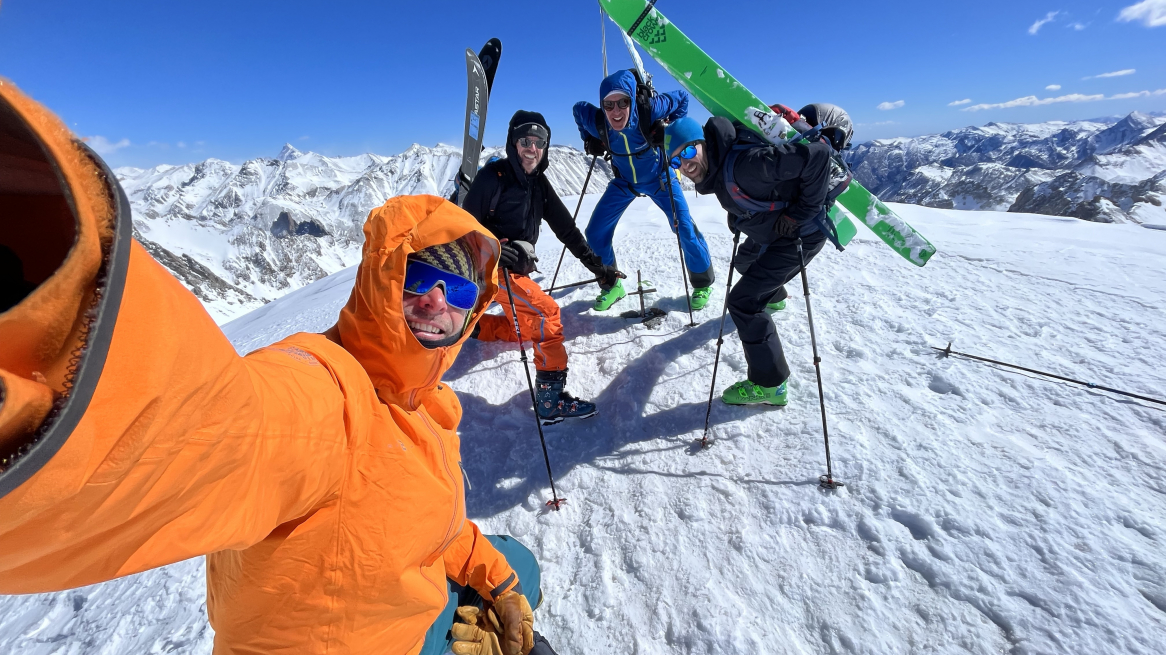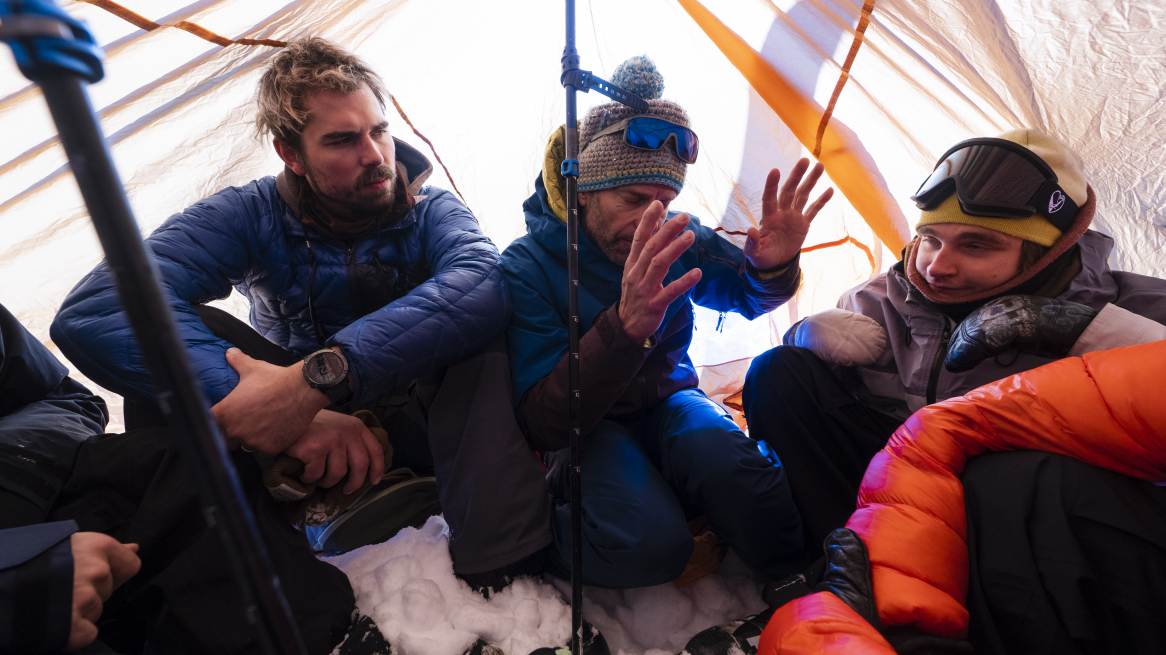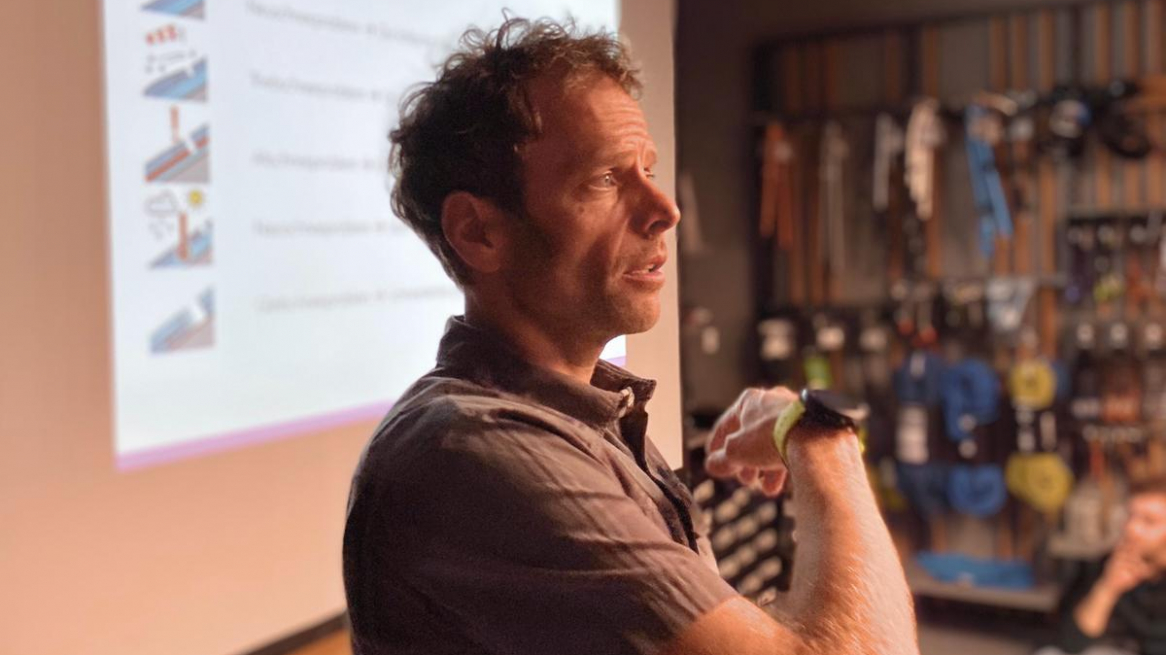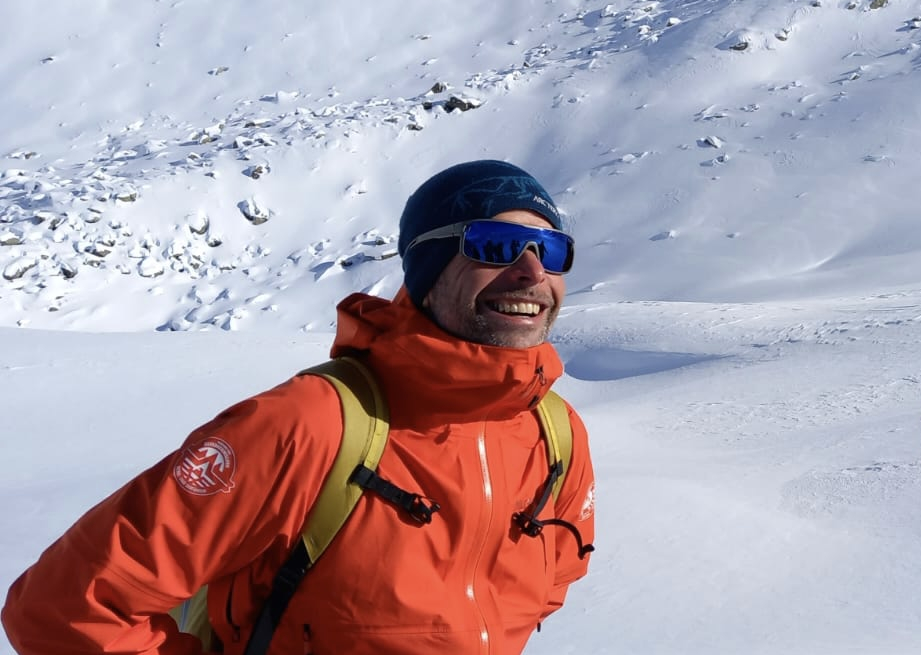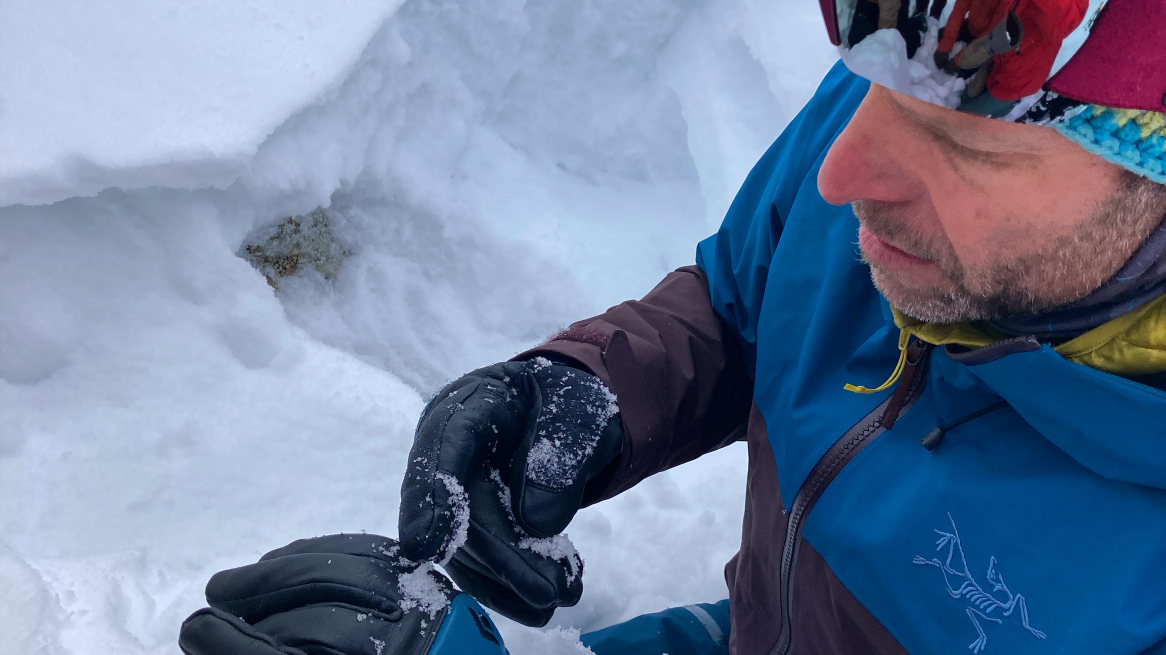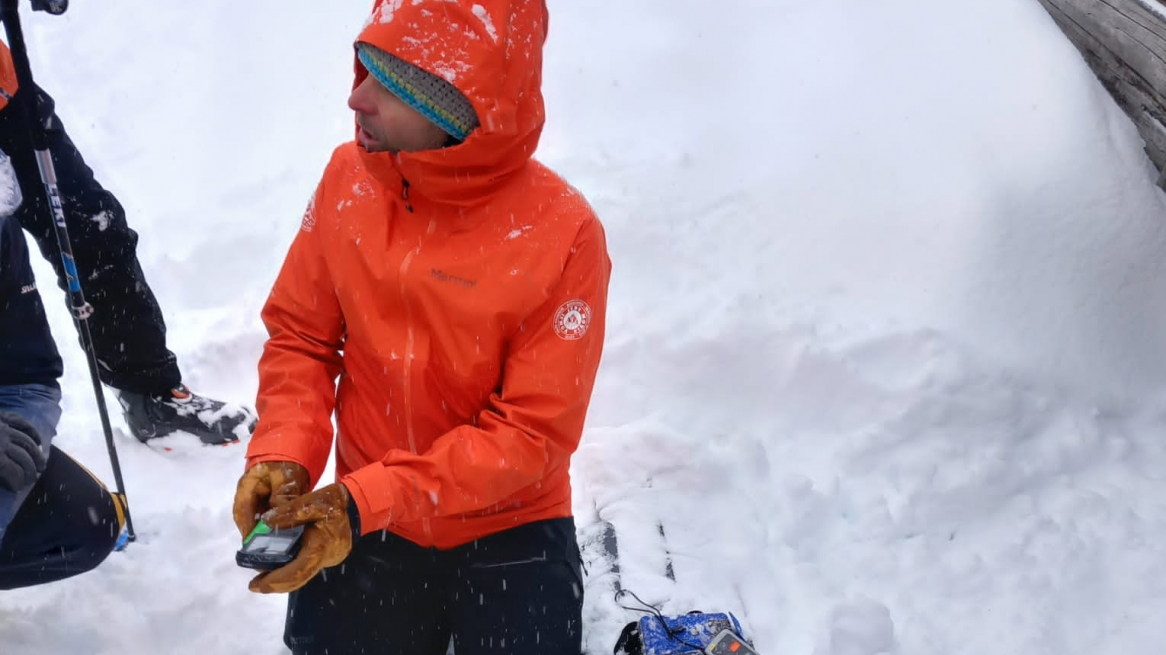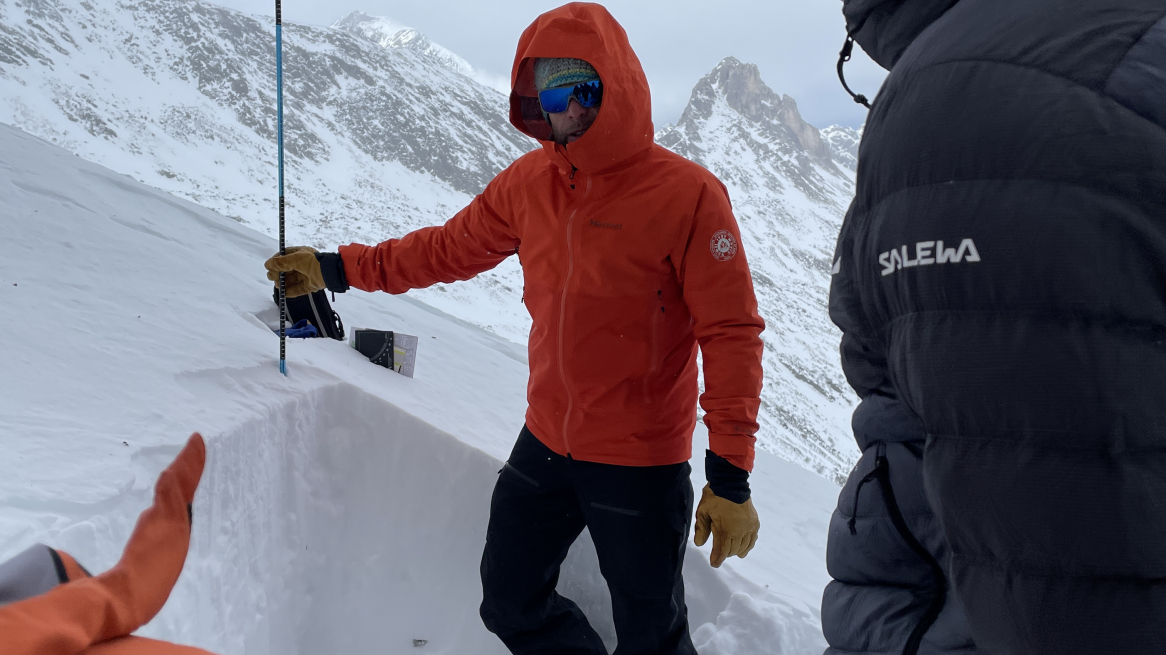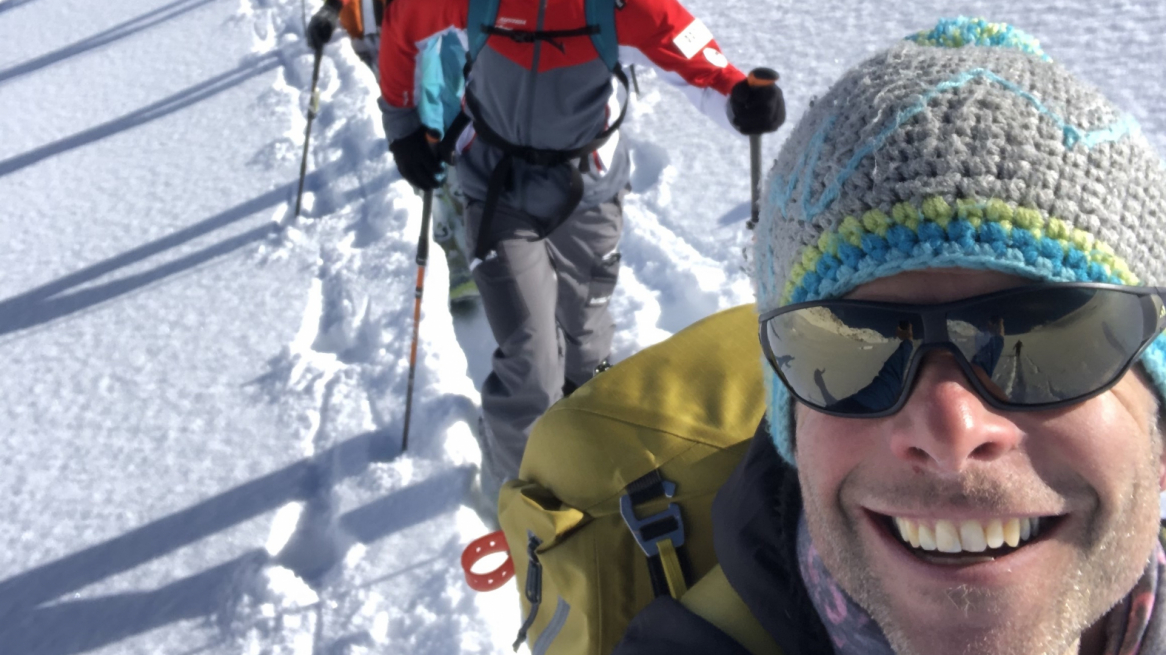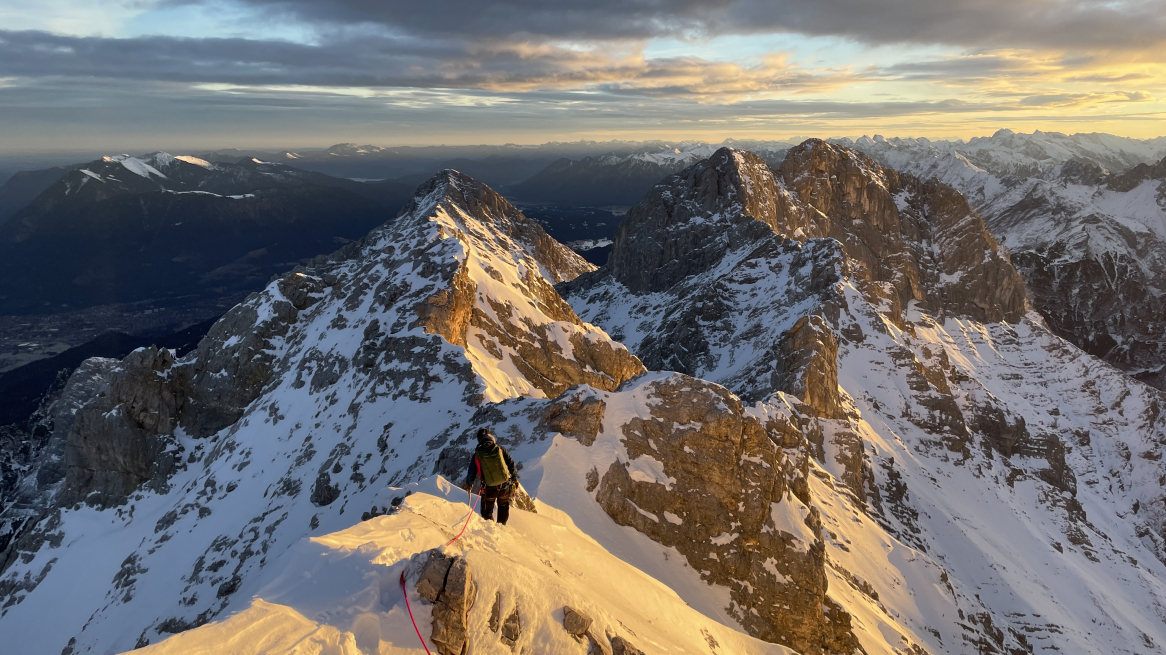
Paul Mair is a mountain guide(-trainer), expert for alpinism, life and social consultant, geographer, father. This is sometimes a reason why his view of things is always from the most diverse angles. In the interview, he explains the basics of tour planning - in the past and today - and which essential filter we easily forget when it comes to safety on the mountain.
Mountains as a passion...
... and profession.
Paul Mair as coach outdoor ...
... and as a lecturer in the valley.
Safety relevant filters before the tour
What are the most important factors in tour planning?
Paul Mair: "I always think in advance about who I'm traveling with What do we want, what can we do, what skills do we have? The answers to these thoughts act as an input filter. Then the tour planning for me is always under the great aspect of information equals safety advantage. This applies to all areas of alpinism, summer and winter, whether climbing, ski touring, off-piste skiing. If I can draw a picture of what the terrain looks like, then I will still always experience surprises out there - for example, if I haven't interpreted something from the map correctly or the local conditions don't match the avalanche situation report one hundred percent - but my brain is already prepared for upcoming decisions."
What are your preferred aids for this?
"In winter, my most important aids for resolving the question marks lurking in the terrain as well as possible are definitely the avalanche situation report, the weather report and/or current weather station data. What is the expected visibility, what is the temperature doing, how much wind or precipitation is there? These are important filters to then select an appropriate tour. Furthermore, of course, then map and guide literature, although this is now strongly reduced to Internet sources. There are ingenious planning tools here that I can use to survey the time and physical demands as well as key points of my tour."
From your perspective, how would you describe the evolution of tour planning: What has changed since you've been out in the mountains?
"In the past - let's say 20, 25 years ago - we used to gather around the fax or radio at huts to get information on weather or avalanche situation reports, which of course could never keep up with today's forecast quality. Sometimes there was even a mini TV where we could get information from the teletext, does anyone remember that? Anyway, we relied less on the most accurate hourly forecasts and just tried things out.
But the most serious point from my point of view was also a greater willingness to do without. I take a very critical view of the fact that today something always has to be possible and feasible at any time. It is particularly noticeable to me on ski tours. In the past, there were tours that were basically not done in high winter. Today, exactly these tours are stormed from the first snowfall.
But of course there are still things that technology doesn't take away from us in tour planning. Anyone who thinks they just have to push the blue dot on the digital map between colored areas, that they don't need a view, is simply wrong. If you can't see, you can't see. Especially hazardous areas do not. And the ultimate responsibility still lies with the human being, even despite the variety of ingenious digital aids, from which I see the technologies as both a curse and a blessing."
Do you also notice a change in practical tour planning that could be attributed to climate change?
"I notice it in two areas: quite obviously a massive retreat of the glaciers and the associated freeing up of moraine areas with steep catchment areas, in combination with less thick snow cover in winter. In summer we are definitely confronted with increased rockfall. We have to expect more intense precipitation and an increase in objective hazard moments. We have always had to take all these considerations into account when planning tours, but they are definitely becoming more and more explosive.
In general, I would wish that there were more possibilities to get to touring areas by public transport in an uncomplicated way. This works better in Switzerland. A demand-oriented local transport concept in the classic touring areas would be desirable there."
Safety factors during the tour
What do you consider to be safety-relevant aspects on tour that are often given too little attention?
"For me, that's clearly the human factor. I would provocatively say that we humans have a tendency to overestimate ourselves. Poor planning, ignorance of lurking dangers and simply too little existing competence in alpine terrain. Who is not aware of everything that can happen, of course, starts more liberated in the mountains. But how long Mother Nature's good fortune and good nature will last is another question. In my opinion, the human factor should always be the first filter when it comes to choosing a tour, and that's where a lot of reflection is needed."
What have you learned about the human factor in your work as a mountain guide?
"For one thing, my outlook on the profession has changed. In the beginning, I thought you just take someone somewhere he or she wouldn't go on their own. This idea is still there, of course, but now I think much more about what it does to this person who is in a dependent relationship with me Of course, it also does something to us mountain guides, it happens quite easily that we put ourselves on a pedestal, and that can have an effect on our leadership behavior.
But I've also learned that it's an incredibly nice feeling to achieve something together with people and to be a provider of help for a great experience."
After the tour: reflection
Do we often feel too safe on the mountain because everything usually turns out well and we simply don't know how close it really was? And how can we learn even when everything has turned out well?
"The great danger here is the risk spiral. Let's assume that the first tour went great, that we perhaps acted with a safety cushion. On tour two, we push our luck a bit more, and everything goes well. And on the third tour, we go one step further, and everything works incredibly well again. It's human nature to always want more, to never be satisfied, to always get the maximum out of everything. If you always add a little bit of risk, you're not far away from an accident. In order to learn something, you need a great deal of self-reflection after the tour about the decisions you have made, even if everything has gone well up to that point. And also to be satisfied sometimes when you haven't pushed your own limit again, but simply had a good time in nature."
Thank you very much for the interview!
Rate this article
Show me the location on the map
L - ives life to its limits, E - xperiences most of her greatest moments on the mountain, N - ever says no to good coffee and A - dores her mum's homemade sauerkraut
Similar articles
Board the train at your home station, a leisurely dinner, perhaps a nightcap before going to bed,…
Spring has arrived and the snow has started to melt in the mountains. Spring flowers and trees…
Mrs. Holle has generously provided us with a fresh blanket of snow. An impressive 50 centimetres fell…
The barn with the ski rental on Igl's village square is getting a bit long in the…

